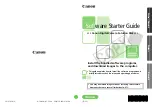
5.3
Linux Support
25
5.3.9
mmcinitrd.u-boot
The
mmcinitrd.u-boot
userland Makefile target has a lot of parts, but its’
goal is simple
Provide an application developer a means of staying focused on
development without the possibility of trashing a flash.
It presumes the existence of an SD card formatted with the
VFAT
filesys-
tem, and a
cramfs
image on the SD card (in the root as
cramfs.img
). The
mmcinitrd.u-boot file is also typically loaded on the SD card, but that isn’t
strictly necessary, as long as it is available and handed to the Linux kernel.
Through a series of steps, it links the
/bin
,
/lib
,
/usr
,
/var
,
/sbin
,
and
/share
directories from within
cramfs.img
, leaving the root of the
filesystem read-write (and volatile), with
/mmc
referring to the root of the
SD card.
Furthermore, it presumes the existence of a script or executable named
linux init
in the root directory of the SD card.
This is done both as an example and as a useful way of nailing down the
static pieces of a package (in the
cramfs.img
file) and allowing read-write
access to the filesystem during application development.
The
linux init
script on the SD card may be modified to start an app
directly, without any risk of boot failure.
Look at the file
/etc/init.d/rcS
for the details of how this is accom-
plished.
5.3.10
Javascript stuff
Refer to the
Boundary Devices’ Javascript Manual
for details of the Bound-
ary Devices scripting application.
5.3.11
Login and SSHD support
By default, the Userland build tool creates a password file
/etc/passwd
with a root password of
BoundaryDevices
.
This is only needed when connecting over sshd.
Use the
menuconfig
make target to change this.
December 28, 2005
Revision 2.8















































